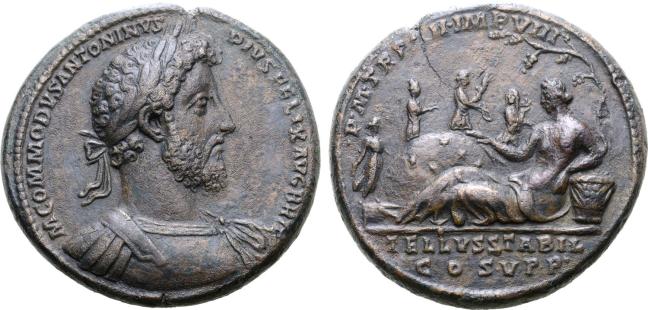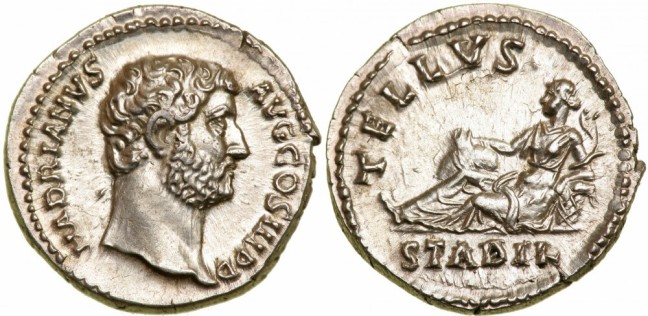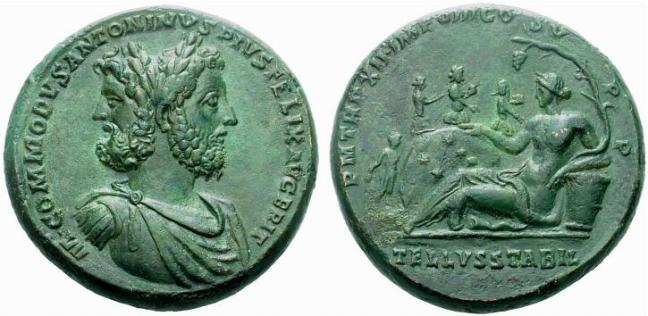Telluri et Cereri in Carinis
Il tempio di Tellus fu votato da P. Sempronius Sophus durante la battaglia contro i Picenti, in occasione di un terremoto nel 268 aev [Flor. I, 14]. Fu eretto subito dopo, anche se le fonti storiche ascrivono la sua costruzione alla cittadinanza o al Senato [Val. Max. VI, 3; Dion. H. VIII, 79]. Si trovava, in Carinis [Suet. De gramm. 15; Dion. H. Cit.; Serv. Aen. VIII, 361], ma l’esatta ubicazione è oggetto di numerose ipotesi fin dal XVI secolo, quella più probabile è che fosse nel luogo in cui oggi si trova l’incrocio tra via del Colosseo e via del Cardello; in epoca arcaica era il sito su cui sorgeva la casa di Sp. Cassio che sappiamo essere stata demolita nel 495 aev [Cic. De domo II; Liv. II, 41, 11; Val. Max. Cit.; Plin. Nat. Hist. XXXIV, 30], nei pressi della casa di Antonio [App. B.C. II, 126] e di quella di Q. Cicerone. Quest’ultimo restaurò il tempio nel 54 aev. [Cic. ad Q. Fr. III, 1, 4; De har. resp. 31] e sembra che ottenne un terreno appartenente al tempio stesso nelle sue vicinanze. Durante i disordini del 56 – 55 aev il magmentarium (la parte più interna) fu esposta alla vista di tutti [Cic. ad Q. Fr. III, 1, 4; De har. Resp. 31]
La data della dedica fu il 13 Dec. [Fast. Ant. ad Id. Dec., CIL I2, 249; 336; 337], quando forse Cerere fu associata a Tellus. In questo giorno si svolgeva anche un pubblico lectisternium in onore di Cerere [Arnob. Adv. Nat. VII, 32].
Il tempio fu usato come luogo di riunione del Senato [Cic. Phil. I, 31; ad Att. XVI, 14, 1; App. B.C. II, 126; Plut. Brut. XIX; Cas. Dio XLIV, 22, 3] e sui suoi muri era dipinta una mappa dell’Italia [Var. R. R. I, 2].
Questo era il momento in cui si chiudeva la semina invernale dei cereali, le attività umane erano finite e le sementi affidate alle due Dee. Si apriva forse il periodo in cui potevano essere indette le Feriae Sementivae (vedi Feriae Sementivae)
Telluri et Cereri in carinis
The temple of Tellus was voted by P. Sempronius Sophus during the Battle Against Picenti, because of an earthquake in 268 BCE [Flor. I, 14] and built soon after, although the historical sources ascribe its construction to the citizenship or the Senate [Val. Max. VI, 3; Dion. H. VIII, 79]. It was, in Carinis [Suet. De gramm. 15; Dion. H. Cit .; Serv. Aen. VIII, 361], but the exact location is subject to numerous assumptions since the sixteenth century: it was more likely the place where today is the intersection between via del Colosseo and via del Cardello. In ancient times it was the site on which stood the house of Sp. Cassius we know to have been destroyed in 495 BCE [CIC. De Dome II; Liv. II, 41, 11; Val. Max. Cit .; Plin. Nat. Hist. XXXIV, 30], near the home of Antonio [App. B.C. II, 126] and that of Q. Cicero. The latter restored the temple in 54 BCE. [CIC. to Q. III Br, 1, 4; De har. resp. 31] and it seems that he obtained a land belonging to the temple itself in its vicinity. During disorders in 56-55 BCE the magmentarium (the inner part) was exposed for all to see [CIC. to Q. III Br, 1, 4; De har. Resp. 31]
The date of the dedication was the Dec. 13th [Fast. Ant. to Id. Dec., CIL I2, 249; 336; 337], when Ceres was perhaps associated with Tellus. On this day it took place also a public lectisternium in honor of Ceres [Arnob. Adv. Nat. VII, 32].
The temple was a place of meeting for the Senate [CIC. Phil. I, 31; to Att. XVI, 14, 1; App. B.C. II, 126; Plut. Brut. XIX; Cas. Dio XLIV, 22, 3] and its walls were painted with a map of Italy [Var. R. A., 2].
This was the moment when you shut the sowing of winter cereals, human activities were over and the seeds entrusted to the two goddesses. Perhaps it opened the period in which they could be called the Feriae sementivae (see Feriae sementivae)
Picture
Commodus Æ Medallion. Rome, AD 186-187. M COMMODVS ANTONINVS PIVS FELIX AVG BRIT, laureate and cuirassed bust right / P M TR P XII IMP VIII, Tellus reclining left, left arm resting on basket of fruit and cradling long vine branch from which hangs grapes above, her right hand placed on star-studded globe, around which are the figures of the Four Seasons; TELLVS STABIL COS V P P in two lines in exergue. Gnecchi 129, pl. 86, 9. 53.18g, 39mm, 1h


